Re-Os Isotope Characteristics of the Huize Ultra-large Lead-Zinc Deposit, Northeastern Yunnan Province: Constraints on the Himalayan Metallogenic Dynamic Background
-
摘要: 会泽超大型铅锌矿是滇东北铅锌多金属成矿域中典型的密西西比河谷型(MVT)或会泽型(HZT)矿床,因其独特的成矿系统以及矿床中富锗而被地质学者熟知,由于该类型矿床成矿温度较低且缺少合适的定年矿物,其成矿时代一直存在较大的争议。本文在会泽铅锌矿麒麟厂矿区1584中段0-11号穿脉坑道块状铅锌硫化物矿石中挑选了9件硫化物样品(黄铁矿、方铅矿和闪锌矿),采用负离子热表面电离质谱法进行Re-Os同位素分析,获得Re-Os等时线年龄为40.7±2.6 Ma(n=9),与模式年龄加权平均值40.0±2.6 Ma(n=8)在误差内完全一致,闪锌矿和方铅矿模式年龄分别为38.24±0.41 Ma和36.57±0.40 Ma。上述同位素年龄揭示了会泽超大型铅锌矿的成矿时代可能为始新世。结合滇东北铅锌矿集区NE向逆冲断层和冲断褶皱控矿构造区域构造解析以及断裂、矿体构造-岩相蚀变特征,提出会泽超大型铅锌矿经历了燕山期、喜山期两阶段构造-流体贯入的成矿作用模型。
-
关键词:
- 滇东北 /
- 会泽铅锌矿床 /
- 区域构造解析 /
- Re-Os同位素年代学
要点(1) 初始187Os/188Os值指示会泽大型铅锌矿床铁、锌和铅等成矿物质来源于壳幔混源。
(2) 黄铁矿、方铅矿和闪锌矿Re-Os等时线年龄显示会泽大型铅锌矿形成于始新世。
(3) 会泽超大型铅锌矿经历了燕山期、喜山期两阶段构造-流体贯入成矿作用。
HIGHLIGHTS(1) Initial 187Os/188Os values of pyrite, galena, and sphalerite samples indicate that metallogenic materials such as Fe, Zn, and Pb derive from the mixture of crust and mantle materials.
(2) The Re-Os isochron age of pyrite, galena, and sphalerite samples indicate that the metallogenic age of the Huize ultra-large lead-zinc deposit is the Eocene period.
(3) The Huize ultra-large lead-zinc deposit experienced two stages of tectonic-fluid penetration mineralization in the Yanshanian and Himalayan periods.
Abstract:BACKGROUNDThe Huize ultra-large lead-zinc deposit is a typical MVT or HZT type deposit in the lead-zinc polymetallic belt. This deposit is known as a unique metallogenic system and germanium enrichment. Due to the low mineralization temperature and lack of suitable dating minerals, the age of the ore deposits has been controversial.OBJECTIVESTo precisely date the mineralization age by Negative Thermal Ionization Mass Spectrometry (NTIMS) Re-Os isotope analyses and discuss the Himalayan metallogenic dynamic process in the Huize ultra-large lead-zinc deposit.METHODSNTIMS Re-Os isotope analyses were carried out on pyrite, galena, and sphalerite samples collected from the Huize ultra-large lead-zinc deposit. The Re-Os isochron age from the pyrite, galena, and sphalerite samples was used to constrain mineralization age. The initial 187Os/188Os values were used to trace the material sources.RESULTSThe Re-Os isochron age of the pyrite samples is 40.7±2.6 Ma (2σ, n=9) with a model weighted average age of 40.0±2.6 Ma (2σ, n=8). The sphalerite and galena samples have model ages of 38.24±0.41 Ma and 36.57±0.40 Ma, respectively. Furthermore, the initial 187Os/188Os values of the pyrite samples vary from 0 to 0.26, whereas those of the sphalerite and galena samples are 0.46 and 0.41, respectively.CONCLUSIONSThe Re-Os isochron ages indicate that the mineralization for the Huize ultra-large lead-zinc deposit occurred during the Eocene period. Based on regional ore controlling structure, tectono-lithofacies alteration characteristics in Northeastern Yunnan and the isochron ages results, a two-stage (Yanshanian and Himalayan) tectonic-fluid metallogenic model for the Huize Ultra-large lead-zinc deposit is inferred.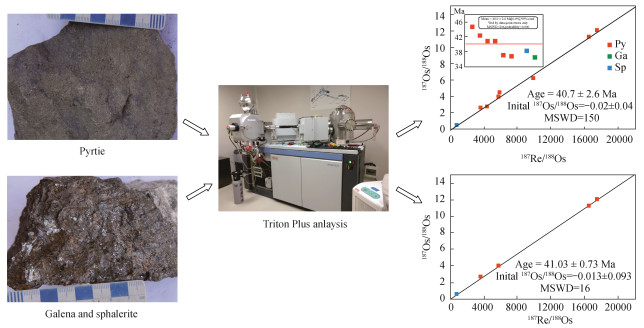
-
斑岩铜矿作为最重要的铜矿类型之一,为世界提供了50%以上的金属铜资源[1]。自斑岩铜矿概念提出后,众多地质矿产学者对斑岩铜矿进行了大量的研究工作。前人在斑岩铜矿形成大地构造背景[2-4]、成矿斑岩特征[3-5]、斑岩铜矿与埃达克岩关系[3-4, 6-7]、斑岩铜矿中金属来源[3, 8]、成矿流体特征[8-9]等方面取得重大成果。研究表明,斑岩型铜(金或钼)成矿体系倾向于出现在线性的、典型的平行造山带中,它们与钙碱性岩基和火山链一起,常产于板块汇聚边缘活动俯冲带之上的岩浆弧中。斑岩铜(金或钼)成矿体系在空间上常与中性-酸性成分的同岩浆来源的钙碱性火山岩相关联。
乌努格吐山斑岩型铜钼矿床位于额尔古纳—呼伦断裂北西侧(图 1),是中国东北地区最为重要的斑岩型铜钼矿床之一,也是中国探明的第四大铜钼伴生矿床。前人对该矿床的地质特征[10]、成岩成矿年代学[11-19]、岩石地球化学[14, 16-18]、围岩蚀变[20]、矿石矿物特征[20]、稳定同位素[14, 16-18]、流体包裹体[14, 21]等方面开展了大量的工作。其中,对围岩和成矿母岩进行了许多同位素年代学研究,包括绢云母K-Ar和Ar-Ar、全岩Rb-Sr、锆石U-Pb等测年方法。然而,由于前人研究时的采样对象、测试方法、实验室的标准和精度均有区别,所取得的年龄存在较大差异,进而导致对岩石成因和形成背景也存在不同的认识。本文在系统地质调查的基础上,选取了蚀变较弱的赋矿围岩不等粒二长花岗岩和成矿母岩流纹质碎斑熔岩的样品,通过LA(MC)-ICP-MS方法对锆石U-Pb同位素、微量元素和Lu-Hf同位素进行研究,精确限定了赋矿围岩和成矿母岩的形成时代,查明了岩浆岩的成因和源区特征。
1. 地质概况
乌努格吐山斑岩型铜钼矿床大地构造位置上位于北东向额尔古纳—呼伦断裂的北西侧之额尔古纳地块西部。区域地层由老到新主要为古生代泥盆系,中生代侏罗系、白垩系,以及新生界[14](图 1)。区域构造受额尔古纳—呼伦深断裂的影响,主要构造线为北东向[11, 13]。本区岩浆活动频繁,时代分为海西晚期、燕山早期和燕山晚期,而以燕山早期为最广泛[22]。
矿区地层出露较为简单,主要为泥盆系上统乌奴耳组和第四系全新统,其岩性与区域上基本一致。矿区内岩浆岩较为发育,主要形成于燕山早期和燕山晚期。区域性北东向额尔古纳—呼伦深断裂位于矿区东南约25km处,受其影响,次一级断裂构造十分发育。赋矿围岩和成矿母岩的成岩时代及岩石成因研究可以对成矿作用有所启示。
2. 实验部分
2.1 实验样品
在系统野外地质调查的基础上,结合前人在该地区的岩浆岩研究成果,选择赋矿围岩不等粒二长花岗岩(WS05)和成矿母岩流纹质碎斑熔岩(WS02)进行锆石U-Pb同位素和Hf同位素进行研究,所选取的样品较为新鲜且蚀变较弱,采样位置具体见图 1。
不等粒二长花岗岩(WS05)手标本呈显浅灰色,具不等粒花岗结构,块状构造;岩石蚀变较弱,以绿泥石化为主,并发生较弱的矿化(图 2中a、b)。主要组成矿物为斜长石、钾长石、石英,黑云母仅保留假像。斜长石约占35%~45%,呈半自形-近半自形板状,粒径为0.2~2.0mm;聚片双晶多较细密平直,为更长石,可见交代港湾结构等;常发育绢云母化、高岭土化等。钾长石约占35%,呈近半自形板状-他形粒状,为正长石;粒径为2~5mm,常呈杂乱状或填隙状分布,具高岭土化;粒内常见斜长石和黑云母嵌布,交代斜长石。石英约占25%,呈他形粒状,粒内具波状、斑块状消光;呈填隙状分布于长石粒间,直径小于5.0mm,常见集合体呈堆状聚集分布。黑云母约占3~5%,直径小于3.0mm,常呈叶片状零散分布,有的嵌布于钾长石粒内;发生绢云母和白云母化后常呈假像。岩石内偶见裂隙、细脉、锥状集合体发育,主要被石英、白云石、钾长石、白云母、黄铁矿、黄铜矿等矿物充填。
流纹质碎斑熔岩(WS02)手标本显浅灰色,主要为斑结构-基质霏细结构,具块状构造(图 2中c、d)。其中斑晶约占40%,基质约占60%。斑晶由长石、石英、暗色矿物构成,其中长石和暗色矿物常发生蚀变而呈假象;粒径一般0.1~4.5mm,略显方向性排列。长石多呈半自形-近半自形板状,较少量显棱角状、尖棱角状等,具绢云母化、少量石英化等主呈假像,局部见少量斜长石、钾长石残留,含量35%~40%。石英多呈自形-半自形粒状,较少量显棱角状、尖棱角状,有的具熔蚀特征,含量约15%。暗色矿物具绢云母化、白云母化等,主呈黑云母假像,少量似角闪石假像,含量3%~5%。基质主由长英质构成。长英质具霏细结构,颗粒细小,粒径一般<0.01mm,少量0.01~0.03mm,略具定向特征,具较明显绢云母化,含量约45%。岩内较多见由石英、白云石、黄铁矿、黄铜矿、少量闪锌矿、白云母等充填的细脉及裂隙,另见较少量黄铁矿、黄铜矿呈星散状交代岩石。
2.2 实验方法
2.2.1 锆石U-Pb年龄测试
锆石的分选、制靶及透反射和阴极发光(CL)由河北省区域地质调查院实验室完成,样品经常规粉碎、磁选和重选,选出高纯度锆石,在双目镜下经人工挑选出纯度在99%以上的锆石。将挑选好的锆石粘贴在环氧树脂表面,打磨抛光后露出锆石的表面,制成靶样。
锆石U-Pb年龄测试在北京锆年领航科技有限公司完成。分析仪器为Finnigan Neptune型MC-ICP MS及配套的New Wave UP213激光剥蚀系统,采用激光剥蚀多接收电感耦合等离子体质谱法(MC-ICP-MS)对锆石进行U-Pb同位素分析。激光剥蚀束斑直径为25μm,剥蚀深度为20~40μm,能量密度为13~14J/cm2,频率为10Hz,激光剥蚀物以氦为载气进入Neptune,利用动态变焦扩大色散可以同时接收质量数相差较大的U-Pb同位素。采用Plešovice(年龄为337±0.37Ma)[23]作为外标样进行基体校正,普通铅校正采用ComPbCorr#3.17校正程序[24]。信号较小的207Pb、206Pb、204Pb(+204Hg)、202Hg用离子计数器(multi-ion-counters)接收,208Pb、232Th、238U信号用法拉第杯接收,实现了所有目标同位素信号的同时接受。对采集的数据采用中国地质大学(武汉)刘勇胜博士研发的ICP-MS DataCal程序和Kenneth R.Ludwig的Isoplot程序进行处理,并绘制谐和图等图件,置信度为95%。详细的仪器操作条件和数据处理方法见文献[25]。
2.2.2 锆石Lu-Hf年龄测试
锆石Hf同位素测试在北京锆年领航科技有限公司完成。锆石Hf同位素分析测试工作通过激光剥蚀电感耦合等离子体质谱法(LA-ICP-MS)进行。激光剥蚀系统为美国NewWave公司生产的UP193FX型193nm ArF准分子系统,激光器来自于德国ATL公司,ICP-MS仪器型号为Agilent 7500a。激光器波长为193nm,脉冲宽度 < 4ns,束斑直径为35μm。采用锆石标样91500[176Hf/177Hf=0.282308±12(2σ)]作为外标样进行基体校正[26]。Hf的地幔模式年龄计算中,亏损地幔176Hf/177Hf值现在值采用0.28325,176Lu/177Hf值采用0.0384[27],地壳模式年龄计算时采用平均地壳的176Lu/177Hf=0.015[28]。数据计算和处理采用ICP-MS DataCal程序完成[25]。
3. 结果与讨论
3.1 锆石U-Pb同位素特征
用于测试的锆石自形程度较好,多为长柱状,整体较完整,发育震荡环带,具岩浆成因特征[29]。选择不发育裂隙和包裹体的锆石进行年龄测试,在发育震荡环带的位置测试(图 3中a、c)。
弱矿化蚀变不等粒二长花岗岩(WS05)锆石Pb含量为8.17×10-6~105.40×10-6,Th含量为60.44×10-6~988.45×10-6,U含量为177.56×10-6~2090.24×10-6;矿化蚀变流纹质碎斑熔岩(WS02)锆石Pb含量为6.63×10-6~38.32×10-6,Th含量为90.78×10-6~701.01×10-6,U含量为106.28×10-6~575.53×10-6(表 1)。Th/U比值均大于0.1,为岩浆成因锆石[30-31]。样品U-Pb年龄<1.0Ga,因而采用锆石206Pb/238U年龄[32]。WS05样品锆石206Pb/238U年龄值为197.19±1.32~203.63±1.38Ma,加权平均值为200.96±0.88Ma,MSWD=3.0(图 3b);WS02样品锆石206Pb/238U年龄值为175.31±1.46~183.89±1.29Ma,加权平均值为179.58±0.91Ma,MSWD=2.7(图 3d)。表明两类岩体均形成于早侏罗世。
表 1 乌努格吐山岩体LA-MC-ICP-MS锆石U-Pb同位素分析结果Table 1. LA-MC-ICP-MS zircon U-Pb isotopic analysis of the Wunugetushan rocks样品名 元素含量(×10-6) Th/U 元素比值 年龄(Ma) Pb Th U 207Pb/206Pb 1σ 207Pb/235U 1σ 206Pb/238U 1σ 207Pb/206Pb 1σ 207Pb/235U 1σ 206Pb/238U 1σ WS02-1 6.63 99.33 106.28 0.93 0.054800689 0.002451556 0.21777954 0.009825907 0.028920427 0.0002901 466.71 99.99 200.06 8.19 183.79 1.82 WS02-2 21.18 360.70 357.46 1.01 0.052139056 0.001611966 0.19929428 0.005904684 0.027904962 0.0002414 300.06 70.36 184.53 5.00 177.42 1.51 WS02-3 9.71 127.12 187.62 0.68 0.053187486 0.001725981 0.20737534 0.006527215 0.028589719 0.0002581 344.50 74.07 191.35 5.49 181.72 1.62 WS02-4 23.29 335.12 435.58 0.77 0.0523526 0.001072423 0.2014723 0.00400281 0.028002268 0.0001724 301.91 46.29 186.37 3.38 178.03 1.08 WS02-5 8.61 90.78 183.57 0.49 0.055145614 0.001930204 0.21747196 0.007653397 0.028658462 0.0002537 416.72 77.77 199.80 6.38 182.15 1.59 WS02-6 20.64 291.00 376.00 0.77 0.054660963 0.001447771 0.2124608 0.005765492 0.028240433 0.0002631 398.20 59.25 195.62 4.83 179.53 1.65 WS02-8 8.18 135.96 138.07 0.98 0.054630817 0.002674734 0.20791517 0.009586314 0.028118499 0.0003531 398.20 109.25 191.80 8.06 178.76 2.21 WS02-9 26.43 382.25 491.17 0.78 0.052954664 0.000994737 0.20600679 0.003891296 0.028261949 0.000183 327.84 42.59 190.20 3.28 179.66 1.15 WS02-10 10.38 130.90 207.45 0.63 0.049377333 0.001784532 0.18873552 0.006546347 0.027953044 0.0002377 164.90 87.95 175.55 5.59 177.72 1.49 WS02-11 22.22 300.23 410.94 0.73 0.052497602 0.001023893 0.20769834 0.004161734 0.028732664 0.0001882 305.62 44.44 191.62 3.50 182.61 1.18 WS02-12 38.32 701.01 575.53 1.22 0.050521629 0.000821741 0.19443142 0.003348741 0.027897904 0.0001672 220.44 34.25 180.40 2.85 177.38 1.05 WS02-13 15.41 248.04 256.19 0.97 0.050553309 0.001345129 0.19415114 0.005059312 0.02803746 0.0002147 220.44 56.47 180.17 4.30 178.25 1.35 WS02-14 16.30 256.91 298.04 0.86 0.050617744 0.001296767 0.19604288 0.004959068 0.028254753 0.0002041 233.40 59.25 181.77 4.21 179.62 1.28 WS02-15 9.86 128.93 197.58 0.65 0.053200153 0.001778239 0.20301776 0.006439848 0.027963384 0.0002068 344.50 75.92 187.68 5.44 177.79 1.30 WS02-16 11.93 159.19 228.39 0.70 0.051343842 0.001688606 0.20303925 0.006728144 0.028755703 0.0002669 257.47 71.29 187.69 5.68 182.76 1.67 WS02-17 23.68 362.75 419.53 0.86 0.054711601 0.001166784 0.21235292 0.00470457 0.028205027 0.0002095 466.71 50.92 195.53 3.94 179.30 1.31 WS02-18 10.80 134.97 212.47 0.64 0.055085188 0.00186445 0.21549537 0.007139035 0.028663977 0.0002485 416.72 80.55 198.15 5.96 182.18 1.56 WS02-19 22.29 417.16 350.97 1.19 0.051618269 0.002041641 0.19860798 0.007722468 0.02798546 0.0002789 333.39 95.36 183.95 6.54 177.93 1.75 WS02-21 28.22 505.10 401.58 1.26 0.053629164 0.001209577 0.20969736 0.004457275 0.028636014 0.0002611 353.76 51.85 193.30 3.74 182.01 1.64 WS02-22 13.76 199.73 247.98 0.81 0.050498539 0.001704943 0.19981518 0.007007338 0.028780503 0.0003232 216.74 47.22 184.97 5.93 182.91 2.03 WS02-23 15.67 233.95 279.27 0.84 0.053609854 0.001945143 0.20426492 0.006872007 0.027979173 0.0002475 353.76 50.92 188.73 5.79 177.89 1.55 WS02-24 12.13 155.47 242.85 0.64 0.048139881 0.001435921 0.18517718 0.005419974 0.028059585 0.0002194 105.65 70.37 172.51 4.64 178.39 1.38 WS02-25 21.94 294.47 456.44 0.65 0.05015908 0.001703097 0.18973048 0.006066855 0.027568544 0.0002324 211.19 79.62 176.40 5.18 175.31 1.46 WS02-26 11.03 202.63 163.39 1.24 0.048642808 0.001868937 0.18622353 0.007027353 0.028034949 0.0002515 131.57 90.73 173.40 6.02 178.24 1.58 WS02-27 18.79 270.47 307.16 0.88 0.0592801 0.001671102 0.23539905 0.006493675 0.02893611 0.0002062 575.96 58.32 214.65 5.34 183.89 1.29 WS02-28 15.65 205.15 290.46 0.71 0.050701322 0.001279128 0.20087159 0.005146519 0.028781368 0.0002166 227.85 57.40 185.86 4.35 182.92 1.36 WS02-29 17.27 254.50 308.03 0.83 0.051600767 0.001357782 0.19851122 0.005220095 0.028089674 0.0002205 333.39 61.10 183.87 4.42 178.58 1.38 WS02-30 15.90 246.27 276.75 0.89 0.051720434 0.001294036 0.19826738 0.004938912 0.027877092 0.0001995 272.29 57.40 183.66 4.19 177.25 1.25 WS05-1 64.67 982.05 957.01 1.03 0.049821594 0.000679027 0.21445247 0.003309532 0.031186237 0.0002163 187.12 31.48 197.28 2.77 197.97 1.35 WS05-2 57.13 549.94 1168.26 0.47 0.051369046 0.00067504 0.22227668 0.003450735 0.031302054 0.0002225 257.47 29.63 203.80 2.87 198.69 1.39 WS05-3 47.18 434.72 1006.50 0.43 0.0506981 0.000730666 0.2174262 0.003523028 0.031061297 0.0002109 227.85 33.33 199.77 2.94 197.19 1.32 WS05-4 34.20 444.49 539.30 0.82 0.050076452 0.00089561 0.21978911 0.003838643 0.031905458 0.0002253 198.23 36.10 201.73 3.20 202.46 1.41 WS05-5 27.24 293.62 512.29 0.57 0.050704918 0.000898261 0.2223234 0.004083565 0.03180311 0.0002221 227.85 73.14 203.84 3.39 201.82 1.39 WS05-6 36.62 406.81 627.91 0.65 0.053227511 0.000811598 0.23413474 0.003583162 0.031928406 0.0001706 338.95 35.18 213.61 2.95 202.61 1.07 WS05-7 83.00 979.16 1509.58 0.65 0.050594466 0.00081154 0.21775243 0.003377792 0.031220547 0.0001736 233.40 37.03 200.04 2.82 198.18 1.09 WS05-8 32.42 390.91 580.70 0.67 0.050650678 0.000990998 0.21692246 0.004238077 0.031130835 0.000211 233.40 72.21 199.35 3.54 197.62 1.32 WS05-9 29.94 328.98 562.17 0.59 0.052125927 0.000943859 0.22710559 0.004118635 0.031673079 0.0002015 300.06 40.74 207.81 3.41 201.01 1.26 WS05-11 44.07 450.63 852.34 0.53 0.050493385 0.000603843 0.22279877 0.002627975 0.03205128 0.000192 216.74 32.40 204.24 2.18 203.37 1.20 WS05-12 11.55 105.13 237.06 0.44 0.051080959 0.001477309 0.22439572 0.00633483 0.032046799 0.0002526 242.66 66.66 205.56 5.25 203.35 1.58 WS05-14 42.65 589.47 697.76 0.84 0.05127644 0.001010592 0.22059852 0.004252904 0.031231933 0.000197 253.77 46.29 202.41 3.54 198.25 1.23 WS05-15 39.70 446.39 683.49 0.65 0.052426052 0.001056312 0.23066064 0.004658531 0.031933659 0.0002448 305.62 46.29 210.74 3.84 202.64 1.53 WS05-16 30.83 351.35 540.24 0.65 0.05575571 0.001034747 0.24554158 0.004129216 0.032092859 0.0002217 442.64 8.33 222.95 3.37 203.63 1.38 WS05-17 31.36 393.76 522.41 0.75 0.050483307 0.001147105 0.22167031 0.004880911 0.031926872 0.0002473 216.74 84.25 203.30 4.06 202.60 1.54 WS05-18 105.40 988.45 2090.24 0.47 0.055715982 0.000922293 0.2396987 0.003938731 0.031188268 0.0002232 442.64 4.63 218.17 3.23 197.98 1.40 WS05-19 41.50 594.60 650.78 0.91 0.052764976 0.000837416 0.22901688 0.00383827 0.031430675 0.0001724 320.43 35.18 209.39 3.17 199.50 1.08 WS05-20 32.81 439.05 545.05 0.81 0.050598044 0.001078644 0.22137187 0.004978527 0.031761313 0.0002199 233.40 80.54 203.05 4.14 201.56 1.37 WS05-21 35.38 283.00 748.80 0.38 0.053983443 0.000743583 0.23800768 0.003481432 0.031971686 0.0002069 368.57 63.88 216.79 2.86 202.88 1.29 WS05-22 28.57 328.62 500.85 0.66 0.050519726 0.001050105 0.22322756 0.004803931 0.032029526 0.0002293 220.44 48.14 204.59 3.99 203.24 1.43 WS05-23 42.59 608.47 643.73 0.95 0.049834093 0.000955096 0.22053286 0.004450034 0.032048558 0.0002182 187.12 44.44 202.35 3.70 203.36 1.36 WS05-24 8.17 60.44 177.56 0.34 0.052461445 0.001898692 0.22941335 0.00798765 0.032038934 0.0002929 305.62 83.33 209.71 6.60 203.30 1.83 WS05-25 24.90 213.14 529.34 0.40 0.053206234 0.000909342 0.23360332 0.004100044 0.031832937 0.0002027 344.50 38.89 213.17 3.37 202.01 1.27 WS05-26 30.48 333.52 561.03 0.59 0.050610366 0.00098056 0.22392893 0.004444282 0.032039082 0.0001895 233.40 78.69 205.17 3.69 203.30 1.18 WS05-27 42.92 359.80 939.57 0.38 0.053112655 0.000673233 0.23125454 0.003331502 0.031536009 0.0002358 344.50 27.78 211.23 2.75 200.15 1.47 WS05-28 24.77 245.33 487.82 0.50 0.05240212 0.001044812 0.23207116 0.004988243 0.032062634 0.0002458 301.91 44.44 211.91 4.11 203.44 1.54 WS05-29 88.23 961.68 1634.70 0.59 0.051403159 0.000521454 0.22632576 0.00277416 0.03194678 0.0002878 257.47 24.07 207.16 2.30 202.72 1.80 WS05-30 45.76 621.40 772.57 0.80 0.050900004 0.00083911 0.21961879 0.00358115 0.03129567 0.0001579 235.25 37.03 201.59 2.98 198.65 0.99 3.2 锆石稀土元素特征
两类岩体锆石的稀土含量较高,弱矿化蚀变不等粒二长花岗岩(WS05)的ΣREE为1036.03×10-6~3489.37×10-6,轻稀土LREE含量为13.76×10-6~158.11×10-6,重稀土HREE含量为1022.28×10-6~3415.31×10-6,轻/重稀土比值为0.01~0.09;矿化蚀变流纹质碎斑熔岩(WS02)的ΣREE为579.83×10-6~1110.14×10-6(表 2),轻稀土LREE含量为28.83×10-6~85.54×10-6,重稀土HREE含量为535.47×10-6~1049.04×10-6,轻/重稀土比值为0.05~0.11。轻重稀土分异程度较高,具岩浆锆石稀土元素特征[33-35]。WS05样品锆石δEu值为0.13~0.38,WS02样品δEu值为0.39~0.67,具负异常;WS05样品锆石δCe值为1.57~476.84,WS02样品δCe值为10.48~1613.59,具强正异常,与典型热液锆石差异较大[36]。两类岩体锆石稀土配分曲线具左倾特征,轻稀土亏损、重稀土富集,具岩浆锆石特征(图 4)。
表 2 锆石稀土元素(×10-6)组成Table 2. REE element (×10-6) compositions of the zircons样品编号 La Ce Pr Nd Sm Eu Gd Tb Dy Ho Er Tm Yb Lu Y ΣREE LREE HREE LREE/HREE δEu δCe WS05-1 0.009 30.818 0.109 2.207 5.808 1.336 37.462 14.819 189.182 78.302 365.255 82.336 775.232 155.907 2317.566 1738.78 40.29 1698.50 0.02 0.28 243.55 WS05-2 0.136 31.651 0.383 3.864 6.669 0.940 38.640 16.064 209.545 91.003 450.613 107.613 1082.980 229.910 2788.147 2270.01 43.64 2226.37 0.02 0.18 33.96 WS05-4 0.033 26.488 0.276 4.746 10.352 3.109 61.401 22.084 281.410 113.924 528.866 118.980 1130.763 227.279 3457.657 2529.71 45.00 2484.71 0.02 0.38 68.45 WS05-5 1.985 26.801 0.971 5.922 5.631 1.404 38.216 15.136 206.981 89.074 430.765 100.296 995.993 206.695 2738.920 2125.87 42.71 2083.16 0.02 0.29 4.73 WS05-6 7.588 48.479 4.041 22.978 9.309 1.237 35.817 12.572 166.430 71.866 347.266 81.181 817.296 167.611 2167.755 1793.67 93.63 1700.04 0.06 0.21 2.15 WS05-7 0.410 34.403 0.259 2.745 5.160 0.656 36.139 14.704 194.596 81.371 391.476 88.285 871.715 179.856 2485.255 1901.77 43.63 1858.14 0.02 0.15 25.90 WS05-8 0.071 26.437 0.180 3.754 6.534 1.671 45.710 17.406 241.011 104.037 496.093 114.322 1096.435 226.859 3098.375 2380.52 38.65 2341.87 0.02 0.30 57.53 WS05-9 0.634 19.833 0.405 4.501 6.978 1.302 43.246 15.843 207.008 86.747 414.299 94.644 940.131 191.090 2642.584 2026.66 33.65 1993.01 0.02 0.23 9.60 WS05-11 0.132 22.938 0.122 1.732 3.547 0.468 29.152 11.791 165.304 72.780 361.164 85.935 859.033 177.858 2241.112 1791.96 28.94 1763.02 0.02 0.14 44.37 WS05-12 0.004 8.790 0.057 1.131 3.136 0.640 19.128 7.017 97.977 41.175 206.170 48.490 497.626 104.694 1221.775 1036.03 13.76 1022.28 0.01 0.25 138.94 WS05-14 0.009 32.244 0.147 2.820 7.772 2.330 55.584 21.225 286.814 119.502 561.039 124.996 1187.688 245.743 3612.210 2647.91 45.32 2602.59 0.02 0.34 212.89 WS05-15 21.426 79.810 7.266 36.278 11.865 1.461 39.927 13.963 180.198 75.958 375.290 87.983 872.939 179.036 2355.693 1983.40 158.11 1825.29 0.09 0.21 1.57 WS05-16 0.293 20.491 0.259 4.083 8.775 1.680 49.344 17.701 216.112 87.518 406.557 90.786 878.944 176.341 2581.778 1958.88 35.58 1923.30 0.02 0.25 18.24 WS05-17 0.010 21.905 0.154 2.594 6.575 1.483 39.647 15.071 197.835 83.773 397.977 91.152 885.319 176.519 2547.626 1920.01 32.72 1887.29 0.02 0.28 133.88 WS05-18 0.236 45.705 0.646 6.351 8.428 0.844 47.397 19.589 265.616 113.368 545.382 128.379 1250.060 255.596 3519.237 2687.60 62.21 2625.39 0.02 0.13 28.68 WS05-19 0.106 31.726 0.695 12.497 23.102 5.938 113.735 37.357 433.393 165.370 720.022 158.983 1491.171 295.277 4901.935 3489.37 74.06 3415.31 0.02 0.35 28.69 WS05-20 0.018 21.968 0.154 2.858 6.418 1.727 45.681 17.085 223.461 92.612 432.575 100.645 974.587 198.240 2787.431 2118.03 33.14 2084.89 0.02 0.31 103.06 WS05-21 0.004 21.146 0.046 1.445 3.019 0.626 24.090 10.259 142.687 63.075 325.911 77.391 790.708 167.260 1970.759 1627.67 26.29 1601.38 0.02 0.22 407.07 WS05-22 0.009 21.816 0.142 3.198 6.343 1.554 41.438 15.424 207.699 87.686 414.011 96.134 937.960 194.215 2622.130 2027.63 33.06 1994.57 0.02 0.29 151.73 WS05-23 0.003 22.911 0.098 1.891 3.940 1.176 29.171 11.371 149.383 61.629 293.179 65.118 632.896 128.904 1849.730 1401.67 30.02 1371.65 0.02 0.34 316.29 WS05-25 0.002 16.515 0.045 1.028 3.357 0.484 23.728 10.029 137.925 61.334 312.802 75.410 763.433 161.320 1887.306 1567.41 21.43 1545.98 0.01 0.17 393.39 WS05-26 1.008 24.326 0.398 2.601 4.114 0.720 25.298 9.861 133.470 56.062 278.105 65.256 647.789 133.518 1756.502 1382.53 33.17 1349.36 0.02 0.22 9.41 WS05-27 0.092 25.471 0.132 1.488 3.234 0.412 22.485 9.565 134.435 59.983 305.314 76.238 761.997 161.823 1859.903 1562.67 30.83 1531.84 0.02 0.15 56.82 WS05-28 0.003 18.423 0.075 1.262 3.754 0.691 25.768 9.865 134.315 59.939 296.515 71.285 712.008 147.629 1821.177 1481.53 24.21 1457.32 0.02 0.21 300.82 WS05-29 0.004 35.127 0.083 1.768 4.805 0.560 36.981 14.534 195.832 83.381 406.337 94.943 902.927 182.187 2596.732 1959.47 42.35 1917.12 0.02 0.13 476.84 WS05-30 0.036 28.599 0.176 3.424 7.606 1.394 51.304 19.131 240.823 97.181 453.263 101.128 968.755 193.054 2897.227 2165.87 41.24 2124.64 0.02 0.22 88.05 WS02-1 0.012 34.124 0.201 3.717 7.501 2.472 33.922 10.145 110.736 40.545 175.905 38.370 354.954 72.500 1190.890 885.10 48.03 837.08 0.06 0.47 171.62 WS02-2 0.004 47.559 0.028 0.832 1.807 0.754 11.337 3.437 45.540 19.866 103.023 26.165 283.910 69.933 671.635 614.20 50.98 563.21 0.09 0.51 1098.02 WS02-3 0.036 38.471 0.057 1.129 1.884 0.852 13.736 4.517 57.026 24.387 123.912 31.368 334.975 77.953 794.007 710.30 42.43 667.87 0.06 0.51 208.54 WS02-4 0.012 50.641 0.028 0.917 2.720 1.204 23.208 8.413 108.997 44.986 213.779 49.899 493.407 105.741 1389.597 1103.95 55.52 1048.43 0.05 0.46 663.38 WS02-5 0.028 25.975 0.035 0.491 1.696 0.609 9.999 3.803 50.945 22.719 116.668 30.012 320.913 76.685 716.429 660.58 28.83 631.74 0.05 0.45 204.19 WS02-6 0.002 39.230 0.043 1.074 1.639 0.847 14.867 5.382 65.972 26.461 127.859 29.241 297.651 61.893 825.531 672.16 42.83 629.32 0.07 0.52 1165.23 WS02-8 0.022 49.184 0.100 1.682 4.625 1.492 25.052 8.713 107.265 41.207 186.206 42.565 411.247 85.181 1270.296 964.54 57.11 907.44 0.06 0.42 255.34 WS02-10 0.037 39.545 0.062 0.682 1.360 0.751 9.690 3.256 44.980 21.913 123.529 33.255 385.436 97.691 775.348 762.19 42.44 719.75 0.06 0.63 201.55 WS02-11 0.021 50.670 0.048 0.923 3.155 1.071 21.971 7.807 103.572 42.221 202.132 45.845 453.713 95.438 1281.416 1028.59 55.89 972.70 0.06 0.39 393.96 WS02-12 0.058 79.046 0.052 1.273 3.551 1.560 23.297 8.214 102.291 40.931 194.555 45.875 471.126 105.613 1292.794 1077.44 85.54 991.90 0.09 0.52 351.83 WS02-13 0.007 41.369 0.031 0.585 1.481 0.882 10.855 3.720 45.719 19.385 103.144 24.923 266.428 61.299 660.738 579.83 44.36 535.47 0.08 0.67 678.70 WS02-14 0.090 42.582 0.057 0.907 2.388 0.960 15.585 5.242 67.882 29.502 146.837 35.601 377.324 83.402 952.952 808.36 46.98 761.37 0.06 0.48 145.43 WS02-15 0.001 36.232 0.025 0.652 1.487 0.687 10.554 3.614 47.289 21.155 108.615 27.361 292.008 67.054 706.786 616.73 39.08 577.65 0.07 0.53 1613.59 WS02-16 0.006 34.544 0.034 0.576 1.889 0.791 11.415 3.799 49.643 20.958 111.258 28.462 308.290 73.409 720.434 645.07 37.84 607.23 0.06 0.52 592.69 WS02-17 0.019 55.315 0.094 1.178 3.093 1.401 22.447 8.198 105.758 43.429 211.144 49.744 502.611 105.706 1372.515 1110.14 61.10 1049.04 0.06 0.51 317.77 WS02-18 0.114 33.968 0.085 0.792 2.304 0.919 14.432 5.286 72.123 29.318 141.600 33.361 341.146 71.884 906.553 747.33 38.18 709.15 0.05 0.49 84.73 WS02-21 3.329 70.750 0.675 4.084 2.962 1.097 16.614 5.693 71.338 29.382 145.671 35.768 374.958 86.700 942.341 849.02 82.90 766.12 0.11 0.48 11.57 WS02-22 0.016 34.745 0.029 0.489 1.662 0.649 11.137 3.800 52.177 22.416 116.877 28.201 305.484 70.054 710.722 647.73 37.59 610.14 0.06 0.46 403.25 WS02-23 0.107 62.564 0.076 1.118 2.358 1.186 17.166 6.850 88.307 38.545 193.851 47.299 498.511 118.403 1243.373 1076.34 67.41 1008.93 0.07 0.57 170.98 WS02-24 2.004 48.432 0.640 3.362 2.621 0.843 14.286 5.148 70.194 31.348 160.890 41.314 434.070 97.581 1022.773 912.73 57.90 854.83 0.07 0.42 10.48 WS02-26 0.005 46.151 0.095 1.871 5.035 1.709 25.118 7.616 91.112 34.882 155.620 35.799 330.432 66.691 1025.318 802.14 54.87 747.27 0.07 0.46 517.34 WS02-27 2.028 56.031 0.752 4.134 4.097 1.387 22.082 7.776 94.715 39.040 181.422 42.463 422.544 89.574 1187.650 968.05 68.43 899.62 0.08 0.45 11.12 WS02-28 0.008 47.547 0.023 0.658 2.307 0.831 14.808 5.122 69.094 31.174 158.314 38.944 424.423 95.861 1005.799 889.11 51.37 837.74 0.06 0.43 873.10 WS02-29 0.032 49.428 0.052 0.873 2.233 1.023 17.366 6.285 84.980 36.660 184.098 44.561 457.590 101.390 1191.673 986.57 53.64 932.93 0.06 0.50 297.46 WS02-30 0.004 59.507 0.064 0.916 2.714 1.230 17.426 6.273 80.858 35.278 178.230 44.319 468.570 107.968 1157.665 1003.36 64.43 938.92 0.07 0.55 961.76 3.3 锆石Lu-Hf同位素特征
弱矿化蚀变不等粒二长花岗岩(WS05)、矿化蚀变流纹质碎斑熔岩(WS02)锆石176Lu/177Hf比值分别为0.001688~0.003588、0.000831~0.001292,176Lu/177Hf比值均较小,表明锆石在形成后,仅具有少量的放射性成因Hf积累,因而可以用初始176Hf/177Hf比值代表形成时的Hf同位素组成[37]。176Hf/177Hf初始比值和εHf(t)值根据同一锆石U-Pb测年数据计算;二阶段模式年龄(TDMC)根据亏损幔源计算[27]。测定结果显示,WS05锆石Hf同位素176Hf/177Hf比值为0.282659~0.282820(表 3),176Yb/177Hf比值为0.099606~0.046370,fLu/Hf为-0.95~-0.89,锆石εHf(0)为-4.0~-0.7,εHf(t)为0.1~5.8(图 5);WS02锆石Hf同位素176Hf/177Hf比值为0.282783~0.282850,176Yb/177Hf比值为0.020042~0.035646,fLu/Hf为-0.97~-0.96,锆石εHf(0)为0.4~2.8,εHf(t)为4.3~6.6(图 6)。WS05锆石Hf单阶段模式年龄(TDM)为643~882Ma,二阶段模式年龄(TDMC)为874~1235Ma;WS02锆石Hf单阶段模式年龄(TDM)为570~663Ma,二阶段模式年龄(TDMC)为802~952Ma。
表 3 乌努格吐山岩体LA-ICP-MS锆石Lu-Hf同位素分析结果Table 3. LA-ICP-MS Zircon Lu-Hf isotopic analysis of Wunugetushan rocks样品编号 年龄(Ma) 176Yb/177Hf 176Lu/177Hf 176Hf/177Hf εHf(0) εHf(t) TDM (Ma) TDMC(Ma) fLu/Hf WS02-001 183.79 0.035646 0.001292 0.282829 2.0 5.9 604 850 -0.96 WS02-002 181.72 0.022735 0.000914 0.282783 0.4 4.3 663 952 -0.97 WS02-003 178.76 0.023283 0.000875 0.282837 2.3 6.1 587 833 -0.97 WS02-004 177.72 0.024778 0.000996 0.282818 1.6 5.4 616 878 -0.97 WS02-005 177.38 0.030802 0.001225 0.282803 1.1 4.8 641 914 -0.96 WS02-006 178.25 0.022562 0.000964 0.282825 1.9 5.7 604 860 -0.97 WS02-007 179.62 0.020253 0.000831 0.282831 2.1 5.9 595 846 -0.97 WS02-008 177.79 0.026337 0.001096 0.282842 2.5 6.3 582 822 -0.97 WS02-009 182.76 0.022090 0.000917 0.282804 1.1 5.0 634 905 -0.97 WS02-010 182.18 0.026716 0.000988 0.282850 2.8 6.6 570 802 -0.97 WS02-011 182.91 0.023562 0.000917 0.282834 2.2 6.1 591 837 -0.97 WS02-012 177.89 0.020042 0.000854 0.282819 1.7 5.5 611 873 -0.97 WS02-013 178.39 0.026401 0.001009 0.282829 2.0 5.8 599 851 -0.97 WS02-014 178.24 0.024919 0.000902 0.282803 1.1 4.9 634 909 -0.97 WS02-015 178.58 0.027675 0.001052 0.282809 1.3 5.1 629 897 -0.97 WS02-016 177.25 0.025114 0.001094 0.282813 1.5 5.2 623 888 -0.97 WS05-001 197.97 0.067606 0.002426 0.282738 -1.2 2.8 756 1057 -0.93 WS05-002 197.19 0.060028 0.002184 0.282694 -2.8 1.3 816 1155 -0.93 WS05-003 201.82 0.073935 0.002745 0.282820 1.7 5.8 643 874 -0.92 WS05-004 202.61 0.059110 0.002155 0.282728 -1.5 2.6 765 1074 -0.94 WS05-005 197.62 0.067911 0.002509 0.282731 -1.4 2.6 768 1073 -0.92 WS05-006 201.01 0.052678 0.002027 0.282712 -2.1 2.0 786 1110 -0.94 WS05-007 203.37 0.046370 0.001688 0.282703 -2.4 1.8 792 1127 -0.95 WS05-008 199.5 0.099606 0.003588 0.282743 -1.0 2.9 775 1055 -0.89 WS05-009 201.56 0.047960 0.001782 0.282714 -2.0 2.1 778 1103 -0.95 WS05-010 202.88 0.058686 0.002184 0.282702 -2.5 1.7 805 1135 -0.93 WS05-011 202.01 0.059888 0.002143 0.282712 -2.1 2.0 789 1111 -0.94 WS05-012 203.3 0.077946 0.002817 0.282659 -4.0 0.1 882 1235 -0.92 WS05-013 200.15 0.056164 0.002059 0.282711 -2.1 2.0 788 1113 -0.94 WS05-014 202.72 0.085910 0.003052 0.282701 -2.5 1.5 825 1143 -0.91 WS05-015 198.65 0.091676 0.003159 0.282751 -0.7 3.2 753 1034 -0.90 注:εHf(t)=10000×{[(176Hf/177Hf)S-(176Lu/177Hf)S×(eλt-1)]/[(176Hf/177Hf)CHUR,0-(176Lu/177Hf)CHUR×(eλt-1)]-1};
TDM=1/λ×ln{1 +[(176Hf/177Hf)S-(176Hf/177Hf)DM]/[(176Hf/177Hf)S-(176Hf/177Hf)DM]};
TDMC=TDM-(TDM-t)×[(fcc-fs)/(fcc-fDM)],fLu/Hf=(176Lu/177Hf)S/(176Lu/177Hf)CHUR-1。
其中:λ=1.867×10-11/a[41];(176Lu/177Hf)S和(176Hf/177Hf)S为样品测量值;(176Lu/177Hf)CHUR=0.0332,(176Hf/177Hf)CHUR,0=0.282772[26];(176Lu/177Hf)DM=0.0384,(176Hf/177Hf)DM=0.28325[27];(176Lu/177Hf)平均地壳=0.015;fcc=[(176Lu/177Hf)平均地壳/(176Lu/177Hf)CHUR]-1;fs= fLu/Hf;fDM=[(176Lu/177Hf)DM/(176Lu/177Hf)CHUR]-1;t为锆石结晶年龄。3.4 成岩时代对成矿作用的约束
乌努格吐山成岩成矿年代学取得大量成果,也存在较大争议[11-15]。本次工作在系统野外地质调查的基础上,选择代表性围岩和成矿母岩进行同位素年龄测试,测试单位为北京锆年领航科技有限公司,测试方法为LA-ICP-MS。锆石U-Pb年龄具有成熟有效,锆石易挑选,封闭体系温度高等优点[39-40],所测年龄结果真实有效,能够有效地代表岩体形成年龄。
本次工作所测围岩(WS05)不等粒二长花岗岩样品锆石具震荡环带,Tu/U比值较大,锆石稀土强烈富集重稀土、亏损轻稀土,δEu负异常;δCe正异常特征,表明测试用锆石为岩浆成因锆石,测试结果为200.96±0.88Ma,该测试结果与秦克章等[12]测得的矿区黑云二长花岗岩全岩Rb-Sr等时线年龄(211±21Ma)、谭刚[14]获得的外围黑云母花岗岩锆石U-Pb年龄(198.1±2.9Ma)、Wang等[16]获得的矿区黑云花岗岩SIMS锆石U-Pb年龄(203.5±1.6Ma)、Zhang等[17]测得的花岗斑岩脉的SHRIMP锆石U-Pb年龄(201.4±3.1Ma)和Mi等[18]获得的矿区黑云母花岗岩锆石U-Pb年龄(206.9±1.9Ma)在误差范围内,表明了200Ma左右是本区重要的成岩时期,主体为大面积展布的黑云母花岗岩和二长花岗岩,其次为花岗斑岩脉体。其中,本次研究的不等粒二长花岗岩为新报道的一类赋矿围岩,与黑云母花岗岩属于同期形成的岩体在不同部位的岩性过渡。因此,本次所测得的不等粒二长花岗岩年龄(200.96±0.88Ma)可代表赋矿围岩岩体形成的时代,该岩体在靠近斑岩体的部位发育一定程度的蚀变和矿化,表明成矿作用晚于大面积展布的二长花岗岩-黑云母花岗岩围岩的形成时代。
成矿母岩(WS02)流纹质碎斑熔岩样品锆石具震荡环带,Tu/U比值较大,锆石稀土强烈富集重稀土、亏损轻稀土,δEu负异常;δCe正异常特征,表明测试用锆石为岩浆成因锆石,加权平均值为179.58±0.91Ma,表明矿化蚀变流纹质碎斑熔岩形成于早侏罗世。该测试结果与秦克章等[11]获得的蚀变绢云母K-Ar年龄(183.5±1.7Ma)、Wang等[16]获得的二长花岗斑岩SIMS锆石U-Pb年龄(180.4±1.4Ma)和Mi等[18]获得的流纹斑岩锆石U-Pb年龄(180.4±4.5Ma)年龄在地质误差范围内,也与Zhang等[17]获得的辉钼矿Re-Os加权平均年龄(179.8±1.0Ma)在误差内一致,稍早于谭钢[14]测得的辉钼矿Re-Os等时线年龄(177.4±2.4Ma),说明除了二长花岗斑岩和流纹斑岩,本次研究的流纹质碎斑熔岩也为一种重要的成矿母岩体,其形成年龄可代表矿区的成矿时代。
赋矿围岩锆石Hf同位素特征表明岩浆源区以新生陆壳物质或幔源物质为主,混有少量古老壳源物质。成矿母岩锆石Hf同位素特征表明岩浆源区主要为新生陆壳物质或幔源物质为主,仅含极少数古老壳源物质。
4. 结论
本文采用LA-MC-ICP-MS和LA-ICP-MS证实不等粒二长花岗岩和流纹质碎斑熔岩为早侏罗世不同阶段的产物。锆石εHf(t)值及二阶段模式年龄(TDMC)的细微区别反映了岩浆源区的异同。通过对比赋矿围岩和成矿母岩成岩时代和Lu-Hf同位素之间的差异,指示了赋矿围岩岩浆源区为幔源物质和少量古老壳源物质的混合;成矿母岩岩浆源区主要为幔源物质。从赋矿围岩到成矿母岩岩浆源区幔源物质增加,壳源物质减少。
致谢: 感谢国家地质实验测试中心屈文俊研究员等专家在低含量硫化物测年和项目支持等方面给予的大力帮助。感谢昆明理工大学韩润生、李峰教授和中国地质调查局成都地质调查中心李文昌教授级高级工程师为论文成文和野外调研提供的大量帮助! -
图 1 滇东北矿集区区域大地构造简图(a)及会泽超大型铅锌矿地质简图(b)
(a)“红框”为研究区位置; (b)地质简图据1: 2.5万会泽铅锌矿区域地质图修改。
(a)铅锌矿床名称:1—天宝山中-大型;2—小石房大型;3—大梁子大型矿床;4—巧家松梁中型;5—茂租大型;6—金沙厂中-大型矿床;7—昭通彝良大型;8—会泽超大型;9—赫章中型;10—垭都中型矿床;11—富乐厂大型;12—赤普中型;13—乐马厂中型银铅锌矿;14—兰坪金顶超大型铅锌矿。断裂名称:1—小江断裂;2—紫云-亚都断裂;3—师宗-弥勒断裂;4—金牛厂-矿山厂-麒麟厂断裂;5—毛坪-迤车-五星厂断裂;6—白牛厂-放马坝断裂;7—茂租-金沙厂断裂。
(b)断裂名称:F1—矿山厂逆断裂;F2—麒麟厂逆断裂;F3—银厂坡逆断裂。图例:1—震旦系灯影组;2—晚泥盆统宰格组1段;3—晚泥盆统宰格组2段;4—晚泥盆统宰格组3段;5—早石炭统大塘组;6—早石炭统摆佐组;7—晚石炭统威宁组;8—晚石炭统马坪组;9—早二叠统龙山组;10—中二叠统栖霞-茅口组;11—晚二叠统峨眉山玄武岩;12—断层;13—铅锌矿体。Figure 1. (a) Tectonic map of lead-zinc polymetallic domain of Northeastern Yunnan Province and (b) Geological map of the Huize ultra-large lead-zinc deposit
图 5 会泽超大型铅锌矿两个阶段构造-流体贯入成矿模型
a—中-晚侏罗世之前,缺失印支造山运动;b—燕山期(~176 Ma),北东向冲断-褶皱主构造形成;c—始新世(~40 Ma),成矿流体贯入交代沉淀就位成矿(AB剖面位置见图 1b)。
Figure 5. Two stages of structural and fluid injection metallogenic model of the Huize ultra-large lead-zinc deposit
表 1 会泽铅锌矿硫化物Re-Os同位素测年数据
Table 1 Re-Os isotope data of sulfide samples from the Huize lead-zinc deposit
样品编号 样品类型 样品质量(g) Re含量(×10-9) 普Os含量(×10-9) 187Os含量(×10-9) 187Re/188Os 187Os/188Os 模式年龄(Ma) 测定值 不确定度 测定值 不确定度 测定值 不确定度 测定值 不确定度 测定值 不确定度 测定值 不确定度 HZ-1 黄铁矿(Py) 0.30804 12.97 0.04 0.0173 0.0003 0.0058 0.0001 3604 55 2.548 0.056 44.58 0.46 HZ-1-3 黄铁矿(Py) 0.30015 11.32 0.03 0.0095 0.0001 0.0049 0.0000 5746 47 3.927 0.050 42.14 0.43 HZ8-1 黄铁矿(Py) 0.36107 8.979 0.066 0.0025 0.0000 0.0038 0.0000 17461 189 11.96 0.06 40.86 0.45 HZ8-3 黄铁矿(Py) 0.34975 7.384 0.055 0.0022 0.0000 0.0032 0.0000 16499 176 11.20 0.04 40.74 0.42 HZ8-4 黄铁矿(Py) 0.35227 5.276 0.039 0.0026 0.0000 0.0020 0.0000 9926 103 6.122 0.018 37.07 0.38 HZ8-6 黄铁矿(Py) 0.35097 9.573 0.071 0.0106 0.0001 0.0037 0.0000 4357 51 2.661 0.020 36.63 0.43 HZ8-8 黄铁矿(Py) 0.35359 6.920 0.051 0.0057 0.0000 0.0033 0.0000 5902 61 4.503 0.018 45.79 0.47 HZ8-2 方铅矿(Gn) 0.35382 0.296 0.002 0.0022 0.0000 0.0001 0.0000 657.8 6.9 0.4196 0.0013 38.24 0.41 HZ8-7 闪锌矿(Sp) 0.35102 0.308 0.002 0.0019 0.0000 0.0001 0.0000 765.2 7.9 0.4666 0.0022 36.57 0.40 -
谢家荣.云南矿产概论[J].地质论评, 1941(增刊):1-42. http://www.wanfangdata.com.cn/details/detail.do?_type=perio&id=QK000000369343 Xie J R.An introduction to the mineral resources in Yunnan Province[J].Geological Review, 1941(Supplement):1-42. http://www.wanfangdata.com.cn/details/detail.do?_type=perio&id=QK000000369343
柳贺昌, 林文达.滇东北铅锌银矿床规律研究[M].昆明:云南大学出版社, 1999:1-419. Liu H C, Lin W D.Regularity Research of Ag-Zn-Pb Ore Deposits North-East Yunnan Province[M].Kunming:Yunnan University Press, 1999:1-419.
张长青. 中国川滇黔交界地区密西西比型(MVT)铅、锌矿床成矿模型[D]. 北京: 中国地质科学院, 2008. Zhang C Q. The Model of Mississippi Valley-type (MVT) Lead and Zinc Deposits in the Junction of Sichuan-Yunnan-Guizhou Provinces[D]. Beijing: Chinese Academy of Geological Sciences, 2008.
Zhou J X, Huang Z L, Bao G P.Geological and sulfur-lead-strontium isotopic studies of the Shaojiwan Pb-Zn deposit, Southwest China:Implications for the origin of hydrothermal fluids[J].Journal of Geochemical Exploration, 2013, 128(2):51-61. https://linkinghub.elsevier.com/retrieve/pii/S0375674213000216
Zhou J X, Huang Z L, Yan Z F.The origin of the Maozu carbonate-hosted Pb-Zn deposit, Southwest China:Constrained by C-O-S-Pb isotopic compositions and Sm-Nd isotopic age[J].Journal of Asian Earth Sciences, 2013, 73(5):39-47. http://linkinghub.elsevier.com/retrieve/pii/S1367912013002411
Zhou J X, Huang Z L, Zhou M F, et al.Constraints of C-O-S-Pb isotope compositions and Rb-Sr isotopic age on the origin of the Tianqiao carbonate-hosted Pb-Zn deposit, SW China[J].Ore Geology Reviews, 2013, 53(8):77-92. http://www.wanfangdata.com.cn/details/detail.do?_type=perio&id=JJ0229955110
王奖臻, 李朝阳, 李泽琴, 等.川滇地区密西西比河谷型铅锌矿床成矿地质背景及成因探讨[J].地质地球化学, 2001, 29(2):41-45. doi: 10.3969/j.issn.1672-9250.2001.02.007 Wang J Z, Li Z Y, Li Z Q, et al.The geological setting, characters and origin of Mississippi valley-type Pb-Zn deposits in Sichuan and Yunnan provinces[J].Geology-Geochemistry, 2001, 29(2):41-45. doi: 10.3969/j.issn.1672-9250.2001.02.007
Zhou J X, Luo K, Wang X C, et al.Ore genesis of the fule Pb-Zn deposit and its relationship with the Emeishan large igneous province:Evidence from mineralogy, bulk C-O-S and in situ S-Pb isotopes[J].Gondwana Research, 2018, 54:161-179. doi: 10.1016/j.gr.2017.11.004
张长青, 毛景文, 刘峰, 等.云南会泽铅锌矿床粘土矿物K-Ar测年及其地质意义[J].矿床地质, 2005, 24(3):317-324. doi: 10.3969/j.issn.0258-7106.2005.03.011 Zhang C Q, Mao J W, Liu F, et al.K-Ar dating of altered clay minerals from Huize Pb-Zn deposit in Yunnan Province and its geological significance[J].Mineral Deposits, 2005, 24(3):317-324. doi: 10.3969/j.issn.0258-7106.2005.03.011
毛景文, 周振华, 丰成友, 等.初论中国三叠纪大规模成矿作用及其动力学背景[J].中国地质, 2012, 39(6):1437-1471. doi: 10.3969/j.issn.1000-3657.2012.06.001 Mao J W, Zhou Z H, Feng C Y, et al.A preliminary study of the Triassic large-scale mineralization in China and its geodynamic setting[J].Geology in China, 2012, 39(6):1437-1471. doi: 10.3969/j.issn.1000-3657.2012.06.001
韩润生, 王峰, 胡煜昭, 等.会泽型(HZT)富锗银铅锌矿床成矿构造动力学研究及年代学约束[J].大地构造与成矿学, 2014, 38(4):758-771. doi: 10.3969/j.issn.1001-1552.2014.04.003 Han R S, Wang F, Hu Y Z, et al.Metallogenic tectonic dynamics and chronology constrains on the Huize-type (HZT) germanium-rich silver-lead-zinc deposits[J].Geotectonica et Metallogenia, 2014, 38(4):758-771. doi: 10.3969/j.issn.1001-1552.2014.04.003
芮宗瑶, 叶锦华, 张立生, 等.扬子克拉通周边及其隆起边缘的铅锌矿床[J].中国地质, 2004, 31(4):337-346. doi: 10.3969/j.issn.1000-3657.2004.04.001 Rui Z Y, Ye J H, Zhang L S, et al.Pb-Zn deposits on the perimeter of the Yangtze craton and on the margins of its uplifts[J].Geology in China, 2004, 31(4):337-346. doi: 10.3969/j.issn.1000-3657.2004.04.001
黄智龙, 陈进, 刘丛强, 等.峨眉山玄武岩与铅锌矿床成矿关系初探——以云南会泽铅锌矿床为例[J].矿物学报, 2001, 21(4):681-688. doi: 10.3321/j.issn:1000-4734.2001.04.019 Huang Z L, Chen J, Liu C Q, et al.A preliminary discussion on the genetic relationship between E'meishan basalts and Pb-Zn deposits as exemplified by the Huize Pb-Zn deposit, Yunnan Province[J].Acta Mineralogica Sinica, 2001, 21(4):681-688. doi: 10.3321/j.issn:1000-4734.2001.04.019
黄智龙, 陈进, 韩润生, 等.云南会泽超大型铅锌矿床地球化学及成因[M].北京:地质出版社, 2004:1-300. Huang Z L, Chen J, Han R S, et.al.Genesis and Geochemistry of the Huize Superlarge Pb-Zn Ore Depositsin Yunnan Province[M].Beijing:Geological Publishing House, 2004:1-300.
李文博, 黄智龙, 王银喜, 等.会泽超大型铅锌矿田方解石Sm-Nd等时线年龄及其地质意义[J].地质论评, 2004, 50(2):189-195. doi: 10.3321/j.issn:0371-5736.2004.02.011 Li W B, Huang Z L, Wang Y X, et al.Age of the giant Huize Zn-Pb deposits determined by Sm-Nd dating of hydrothermal calcite[J].Geological Review, 2004, 50(2):189-195. doi: 10.3321/j.issn:0371-5736.2004.02.011
蔺志永, 王登红, 张长青.四川宁南跑马铅锌矿床的成矿时代及其地质意义[J].中国地质, 2010, 37(2):488-494. doi: 10.3969/j.issn.1000-3657.2010.02.023 Lin Z Y, Wang D H, Zhang C Q.Rb-Sr isotopic age of sphalerite from the Paoma lead-zinc deposit in Sichuan Province and its implications[J].Geology in China, 2010, 37(2):488-494. doi: 10.3969/j.issn.1000-3657.2010.02.023
鲍淼, 周家喜, 黄智龙, 等.铅锌矿床定年方法及川-滇-黔铅锌成矿域年代学研究进展[J].矿物学报, 2011, 31(3):391-396. http://kns.cnki.net/KCMS/detail/detail.aspx?filename=KWXB201103012&dbname=CJFD&dbcode=CJFQ Bao M, Zhou J X, Huang Z L, et al.Dating methods for Pb-Zn deposits and chronology research progress of Sichuan-Yunnan-Guizhou Pb-Zn metallogenic province:A review[J].Acta Mineralogica Sinica, 2011, 31(3):391-396. http://kns.cnki.net/KCMS/detail/detail.aspx?filename=KWXB201103012&dbname=CJFD&dbcode=CJFQ
吴越. 川滇黔地区MVT铅锌矿床大规模成矿作用的时代与机制[D]. 北京: 中国地质大学, 2013. Wu Y. The Age and Ore-forming Process of MVT Deposits in the Boundary Area of Sichuan-Yunnan-Guizhou provinces, Southwest China[D]. Beijing: China University of Geosciences, 2013.
张长青, 李向辉, 余金杰, 等.四川大梁子铅锌矿床单颗粒闪锌矿铷-锶测年及地质意义[J].地质论评, 2008, 54(4):532-538. doi: 10.3321/j.issn:0371-5736.2008.04.013 Zhang C Q, Li X H, Yu J J, et al.Rb-Sr dating of single sphalerites from the Daliangzi Pb-Zn deposit, Sichuan, and its geological significances[J].Geological Review, 2008, 54(4):532-538. doi: 10.3321/j.issn:0371-5736.2008.04.013
刘莹莹, 漆亮, 黄智龙, 等.滇东北富乐铅锌矿床硫化物Re-Os同位素年龄及其地质意义[J].矿物学报, 2013(增刊):599-600. http://d.old.wanfangdata.com.cn/Conference/8301447 Liu Y Y, Qi L, Huang Z L, et al.Re-Os isotopic age of sulphide from the Fule lead-zinc deposit in Northeastern Yunnan and its geological implications[J].Acta Mineralogica Sinica, 2013(Supplement):599-600. http://d.old.wanfangdata.com.cn/Conference/8301447
周家喜. 黔西北铅锌成矿区分散元素及锌同位素地球化学[D]. 北京: 中国科学院大学, 2011. Zhou J X. Dispersing Elements and Zinc Isotopic Geochemistry for Pb-Zn Metallogenic Area in Northwest Guizhou Province[D]. Beijing: University of Chinese Academy of Sciences, 2011.
李文博, 黄智龙, 陈进, 等.云南会泽超大型铅锌矿床成矿物质来源:来自矿区外围地层及玄武岩成矿元素含量的证据[J].矿床地质, 2002, 21(增刊):413-416. http://d.old.wanfangdata.com.cn/Conference/4400434 Li W B, Huang Z L, Chen J, et al.Sources of ore-forming materials in Huize superlarge lead-zinc deposit, Yunnan Province:Evidence from contents of ore-forming element in strata and basalts from margin of ore district[J].Mineral Deposits, 2002, 21(Supplement):413-416. http://d.old.wanfangdata.com.cn/Conference/4400434
张振亮. 云南会泽铅锌矿床成矿流体性质和来源[D]. 北京: 中国科学院研究生院(地球化学研究所), 2006. Zhang Z L. Properties and Sources of Ore-forming Fluids in Huize Pb-Zn Deposit, Yunnan Province[D]. Beijing: Graduate University Chinese Academy of Sciences (Institute of Geochemistry), 2006.
韩润生, 李波, 倪培, 等.闪锌矿流体包裹体显微红外测温及其矿床成因意义——以云南会超大型富锗银铅锌矿床为例[J].吉林大学学报(地球科学版), 2016, 46(1):91-104. http://www.wanfangdata.com.cn/details/detail.do?_type=perio&id=cckjdxxb201601010 Han R S, Li B, Ni P, et al.Infrared micro-thermometry of fluid inclusions in sphalerite and geological significance of Huize super-large Zn-Pb-(Ge-Ag) deposit, Yunnan Province[J].Journal of Jilin University (Earth Science Edition), 2016, 46(1):91-104. http://www.wanfangdata.com.cn/details/detail.do?_type=perio&id=cckjdxxb201601010
任顺利, 李延河, 曾普胜, 等.膏盐层在云南会泽和毛坪铅锌矿成矿中的作用:硫同位素证据[J].地质学报, 2018, 92(5):1041-1055. doi: 10.3969/j.issn.0001-5717.2018.05.010 Ren S L, Li Y H, Zeng P S, et al.Effect of sulfate evaporate salt layer in mineralization of the Huize and Maoping lead-zinc deposits in Yunnan:Evidence from sulfur isotope[J].Acta Geologica Sinca, 2018, 92(5):1041-1055. doi: 10.3969/j.issn.0001-5717.2018.05.010
陈进.麒麟厂铅锌硫化物矿床成因及成矿模式探讨[J].有色金属矿床与勘探, 1993, 2(2):90-99. http://www.cqvip.com/qk/96128A/199302/1223196.html Chen J.Genesis and metalogenic pattern of the Qilinchang Pb-Zn deposit[J].Geological Exploration for Non-Ferrous Metals, 1993, 2(2):90-99. http://www.cqvip.com/qk/96128A/199302/1223196.html
韩润生, 刘丛强, 黄智龙, 等.论云南会泽富铅锌矿床成矿模式[J].矿物学报, 2001, 21(4):674-680. doi: 10.3321/j.issn:1000-4734.2001.04.018 Han R S, Liu C Q, Huang Z L, et al.Genesis modeling of Huize lead-zinc ore deposit in Yunnan[J].Acta Mineralogica Sinica, 2001, 21(4):674-680. doi: 10.3321/j.issn:1000-4734.2001.04.018
韩润生, 陈进, 李元, 等.云南会泽麒麟厂铅锌矿床构造地球化学及定位预测[J].矿物学报, 2001, 21(4):667-680. doi: 10.3321/j.issn:1000-4734.2001.04.017 Han R S, Chen J, Li Y, et al.Tectono-geochemical features and orientation prognosis of concealed ores of Qilingchang lead-zinc deposit in Huize, Yunnan[J].Acta Mineralogica Sinica, 2001, 21(4):667-680. doi: 10.3321/j.issn:1000-4734.2001.04.017
韩润生, 陈进, 黄智龙, 等.构造成矿动力学及隐伏矿定位预测——以云南会泽铅锌(银、锗)矿床为例[M].北京:科学出版社, 2006:16-20, 85-95, 165-168. Han R S, Chen J, Huang Z L, et al.Dynamics of Tectonic Ore-forming Processes and Localization-Prognosis of Concealed Orebodies:As Exemplified by the Huize Super-large Zn-Pb-(Ag-Ge) District, Yunnan[M].Beijing:Science Press, 2006:16-20, 85-95, 165-168.
Zhou C X, Wei C S, Guo J Y, et al.The source of metals in the Qilinchang Zn-Pb deposit, Northeastern Yunnan, China:Pb-Sr isotope constraints[J].Economic Geology, 2001, 96(3):583-598. doi: 10.2113/gsecongeo.96.3.583
Brannon J C, Podosek F A, McLimans R K.Alleghenian age of the Upper Mississippi Valley lead-zinc deposit determined by Rb-Sr dating of sphalerite[J].Nature, 1992, 356:509-511. doi: 10.1038/356509a0
Brannon J C, Susan C C, Frank A, et al. Radiometric Dating of Ancient Calcite: Th-Pb & U-Pb Isochrones Fororest Age and Late-stage Calcite from the Central Tennessee Zinc District, An Appalachian-Ouachita Age MVT Deposit[C]. Abstracts with programs-Geological Society of America, 1995: 118.
Brannon J C, Susan C C, Frank A P, et al.Th-Pb and U-Pb dating of ore-stage calcite and Paleozoic fluid flow[J].Science, 1996, 271:491-493. doi: 10.1126/science.271.5248.491
Leach D L, Bradley D, Lewchuk M T, et al.Mississippi Valley-type lead-zinc deposits through geological time:Implications from recent age-dating research[J].Mineralium Deposita, 2001, 36(8):711-740. doi: 10.1007/s001260100208
Nakai S, Halliday A N, Kesler S E, et al.Rb-Sr dating of sphalerites from Tennessee and the genesis of Mississippi Valley type ore deposits[J].Nature, 1990, 346(6282):354-357. doi: 10.1038/346354a0
李超, 裴浩翔, 王登红, 等.山东孔辛头铜钼矿成矿时代及物质来源:来自黄铜矿、辉钼矿Re-Os同位素证据[J].地质学报, 2016, 90(2):240-249. doi: 10.3969/j.issn.0001-5717.2016.02.004 Li C, Pei H X, Wang D H, et al.Age and source constraints for Kongxintou copper-molybdenum deposit Shandong from Re-Os isotope in molybdenite and chalcopyrite[J].Acta Geologica Sinica, 2016, 90(2):240-249. doi: 10.3969/j.issn.0001-5717.2016.02.004
杜安道, 屈文俊, 李超, 等.铼锇法及其在矿床学研究中的应用[M].北京:地质出版社, 2001. Du A D, Qu W J, Li C, et al.Re-Os Dating Method and Its Application to Ore Study[M].Beijing:Geological Publishing House, 2001.
屈文俊, 杜安道.高温密闭溶样电感耦合等离子体质谱准确测定辉钼矿铼-锇地质年龄[J].岩矿测试, 2003, 22(4):254-262. doi: 10.3969/j.issn.0254-5357.2003.04.003 Qu W J, Du A D.The electrochemical behavior of dopamine on poly (cinchomeronic acid) modified glassy carbon electrode and its detection[J].Rock and Mineral Analysis, 2003, 22(4):254-262. doi: 10.3969/j.issn.0254-5357.2003.04.003
李超, 屈文俊, 周利敏, 等.Carius管直接蒸馏快速分离锇方法研究[J].岩矿测试, 2010, 29(1):14-16. doi: 10.3969/j.issn.0254-5357.2010.01.004 Li C, Qu W J, Zhou L M, et al.Rapid separation of osmium by direct distillation with Carius tube[J].Rock and Mineral Analysis, 2010, 29(1):14-16. doi: 10.3969/j.issn.0254-5357.2010.01.004
周利敏, 高炳宇, 王礼兵, 等.Carius管直接蒸馏快速分离锇方法的改进[J].岩矿测试, 2012, 31(3):413-418. doi: 10.3969/j.issn.0254-5357.2012.03.005 Zhou L M, Gao B Y, Wang L B, et al.Improvements on the separation method of osmium by direct distillation in Carius tube[J].Rock and Mineral Analysis, 2012, 31(3):413-418. doi: 10.3969/j.issn.0254-5357.2012.03.005
李超, 屈文俊, 杜安道, 等.铼-锇同位素定年法中丙酮萃取铼的系统研究[J].岩矿测试, 2009, 28(3):233-238. doi: 10.3969/j.issn.0254-5357.2009.03.008 Li C, Qu W J, Du A D, et al.Comprehensive study on extraction of rhenium with acetone in Re-Os isotopic dating[J].Rock and Mineral Analysis, 2009, 28(3):233-238. doi: 10.3969/j.issn.0254-5357.2009.03.008
Creaser R A, Papanastassiou D A, Wasserburg G J.Negative thermal ion mass spectrometry of osmium, rhenium and iridium[J].Geochimica et Cosmochimica Acta, 1991, 55(1):397-401. doi: 10.1016/0016-7037(91)90427-7
Volkening J, Walczyk T, Heumann K G.Osmium isotope ratio determinations by negative thermal ion mass spectrometry[J].International Journal of Mass Spectrometry and Ion Processes, 1991, 105(2):147-159. doi: 10.1016/0168-1176(91)80077-Z
Nier A O.A mass spectrometer for routine isotope abun-dance measurements[J].Review of Scientific Instruments, 1940, 11(7):212. doi: 10.1063/1.1751688
Smoliar M L, Walker R J, Morgan J W.Re-Os ages of group ⅡA, ⅡA, ⅣA and ⅣB iron meteorites[J].Science, 1996, 271:1099-1102. doi: 10.1126/science.271.5252.1099
Ludwig K.A Geochronogical Toolkit for Microsoft Excel(Version 2.0.)[M].Geochronology Center, 1999.
Liu Y, Hou Z Q, Tian S H, et al.Zircon U-Pb ages of the Mianning-Dechang syenites, Sichuan Province, Southwestern China:Constraints on the giant REE mineralization belt and its regional geological setting[J].Ore Geology Reviews, 2015, 64(8):554-568. http://linkinghub.elsevier.com/retrieve/pii/S0169136814000821
田世洪, 侯增谦, 袁忠信, 等.四川冕宁木落寨稀土矿床成岩成矿的40Ar/39Ar年代学研究[J].岩石学报, 2006, 22(10):2431-2436. http://www.wanfangdata.com.cn/details/detail.do?_type=perio&id=ysxb98200610002 Tian S H, Hou Z Q, Yuan Z X, et al.40Ar/39Ar geochro-nology of rocks and ores from the Muluozhai REE deposit in Mianning county, Sichuan Province[J].Acta Petrologica Sinica, 2006, 22(10):2431-2436. http://www.wanfangdata.com.cn/details/detail.do?_type=perio&id=ysxb98200610002
Mao J W, Zhang Z C, Zhang Z H, et al.Re-Os isotopic dating of molybdenites in the Xiaoliugou W(Mo) deposit in the Northern Qilian Mountains and its geological significance[J].Geochimica et Cosmochimica Acta, 1999, 63(11-12):1815-1818. doi: 10.1016/S0016-7037(99)00165-9
Stein H J, Markey R J, Morgan J W, et al.The remark-able Re-Os chronometer in molybdenite:How and why it works[J].Terra Nova, 2001, 13(6):479-486. doi: 10.1046/j.1365-3121.2001.00395.x
周柯, 叶会寿, 毛景文, 等.豫西鱼池岭斑岩型钼矿床地质特征及其辉钼矿铼-锇同位素年龄[J].矿床地质, 2009, 28(2):170-184. doi: 10.3969/j.issn.0258-7106.2009.02.006 Zhou K, Ye H S, Mao J W, et al.Geological characteristics and molybdenite Re-Os isotopic dating of Yuchiling porphyry Mo deposit in Western Henan Province[J]. Mineral Deposits, 2009, 28(2):170-184. doi: 10.3969/j.issn.0258-7106.2009.02.006
Morelli R, Creaser R A, Seltmann R, et al.Age and source constraints for the giant Muruntau gold deposit, Uzbekistan, from coupled Re-Os-He isotopes in arsenopyrite[J].Geology, 2007, 35(9):795-798. doi: 10.1130/G23521A.1
张位及.试论滇东北铅锌矿床的沉积成因和成矿规律[J].地质与勘探, 1984(7):11-16. http://www.wanfangdata.com.cn/details/detail.do?_type=perio&id=QK000000365905 Zhang W J.Sedimentary origin and metallogenic regularity of Pb-Zn deposit in Northeastern Yunnan[J].Geology and Exploration, 1984(7):11-16. http://www.wanfangdata.com.cn/details/detail.do?_type=perio&id=QK000000365905
廖文.滇东黔西铅锌金属区硫铅同位素组成特征与成矿模式探讨[J].地质与勘探, 1984(1):1-6. http://www.wanfangdata.com.cn/details/detail.do?_type=perio&id=QK000000365790 Liao W.Characteristics of sulfur and lead isotopic composition and metallogenic model for Pb-Zn metallogenic deposit, Eastern Yunnan and Western Guizhou Province[J].Geology and Exploration, 1984(1):1-6. http://www.wanfangdata.com.cn/details/detail.do?_type=perio&id=QK000000365790
韩润生, 胡煜昭, 王学琨, 等.滇东北富锗银铅锌多金属矿集区矿床模型[J].地质学报, 2012, 86(2):280-294. http://d.old.wanfangdata.com.cn/Periodical/dizhixb201202007 Han R S, Hu Y Z, Wang X K, et al.Mineralization model of rich Ge-Ag-bearing Zn-Pb polymetallic deposit concentrated district in Northeastern Yunnan, China[J].Acta Geologica Sinica, 2012, 86(2):280-294. http://d.old.wanfangdata.com.cn/Periodical/dizhixb201202007
-
期刊类型引用(9)
1. 张莹,任战利,兰华平,祁凯,邢光远,夏岩. 关中盆地新近系蓝田-灞河组热储层物性及渗流特征研究. 地质通报. 2024(05): 712-725 .  百度学术
百度学术
2. 王立新,高青松,周家林,刘岩,曹茜,陈婷,王力. 黏土矿物类型对杭锦旗下石盒子组致密砂岩储层束缚水饱和度的影响. 岩矿测试. 2024(06): 821-835 .  本站查看
本站查看
3. 吴春燕,展转盈,李文厚,王宁,吴琳. 联合压汞法表征致密油储层孔喉特征:以陕北定边地区延长组长7段为例. 地质科学. 2023(02): 710-722 .  百度学术
百度学术
4. Lei Gong,Xianzhi Gao,Futao Qu,Yongshu Zhang,Guangya Zhang,Jun Zhu. Reservoir Quality and Controlling Mechanism of the Upper Paleogene Fine-Grained Sandstones in Lacustrine Basin in the Hinterlands of Northern Qaidam Basin, NW China. Journal of Earth Science. 2023(03): 806-823 .  必应学术
必应学术
5. 杨飞,申志超,杜江民,王芳,董博. 有机酸对致密砂岩中黏土矿物的选择性溶蚀研究. 岩矿测试. 2023(03): 478-490 .  本站查看
本站查看
6. 宁凡,赵欣,邹妞妞,谢渊,许安东. 柴北缘侏罗系大煤沟组砂岩储层孔喉分布特征. 非常规油气. 2022(03): 42-51 .  百度学术
百度学术
7. 翁剑桥,李夏伟,戚明辉,张烨毓,王禹,张伟. 四川盆地龙马溪组页岩孔隙度实验方法分析. 岩矿测试. 2022(04): 598-605 .  本站查看
本站查看
8. 刘广峰,王连鹤,孙仲博,王俊涛,姜帆. 致密砂岩储层孔喉结构研究进展. 石油科学通报. 2022(03): 406-419 .  百度学术
百度学术
9. 张宝进,徐吉丰. 油页岩干馏残渣与含油污泥混烧特性研究. 当代化工. 2021(03): 644-647 .  百度学术
百度学术
其他类型引用(5)




 下载:
下载:





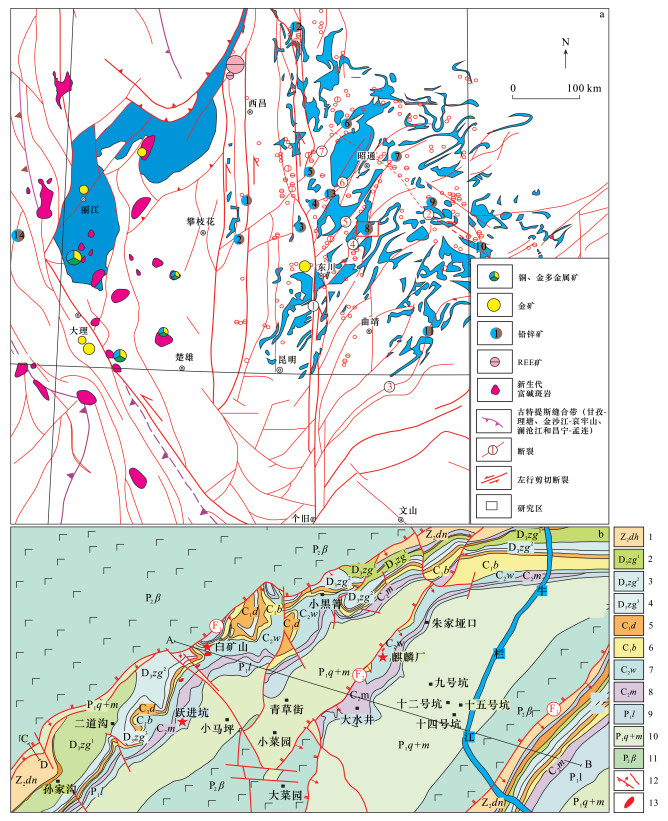
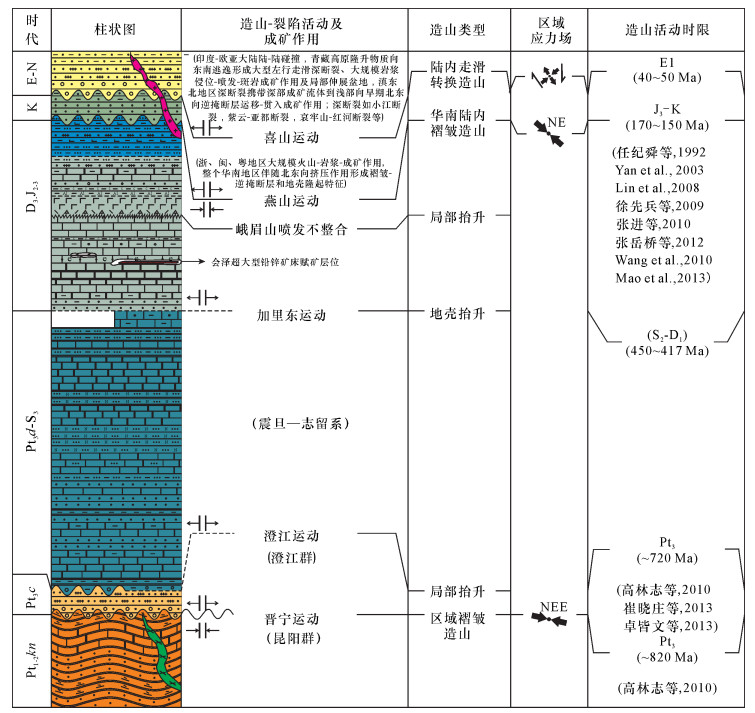
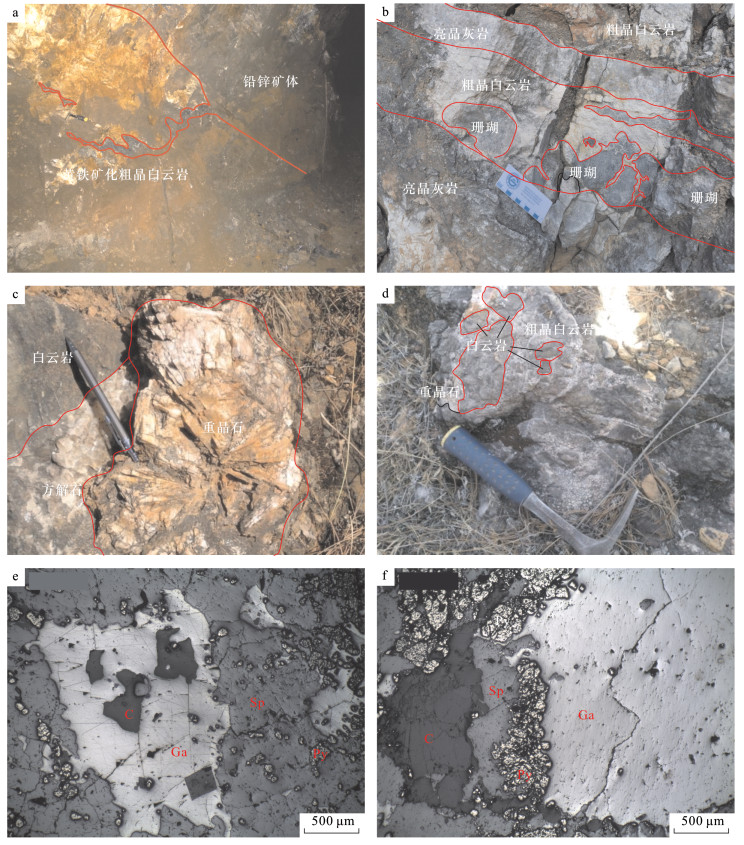
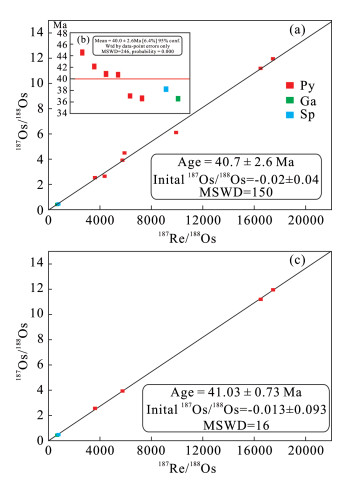
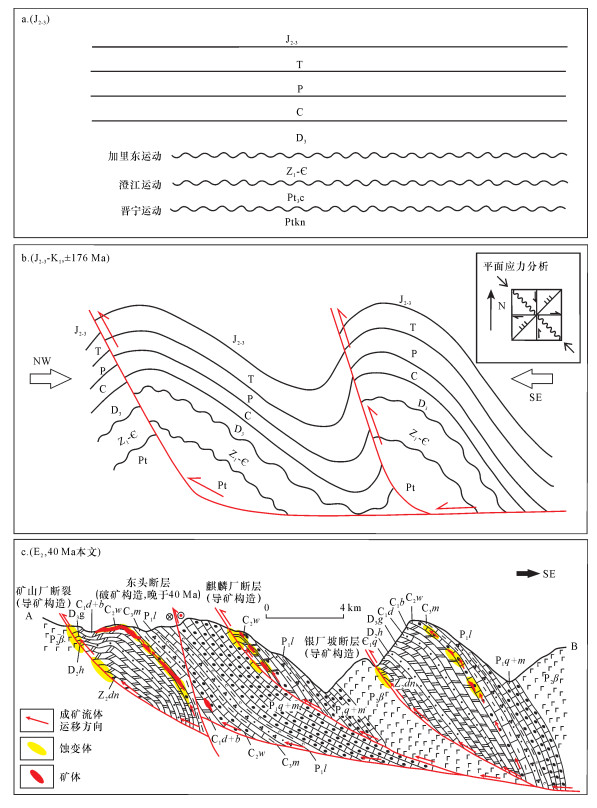
 京公网安备 11010202008159号
京公网安备 11010202008159号